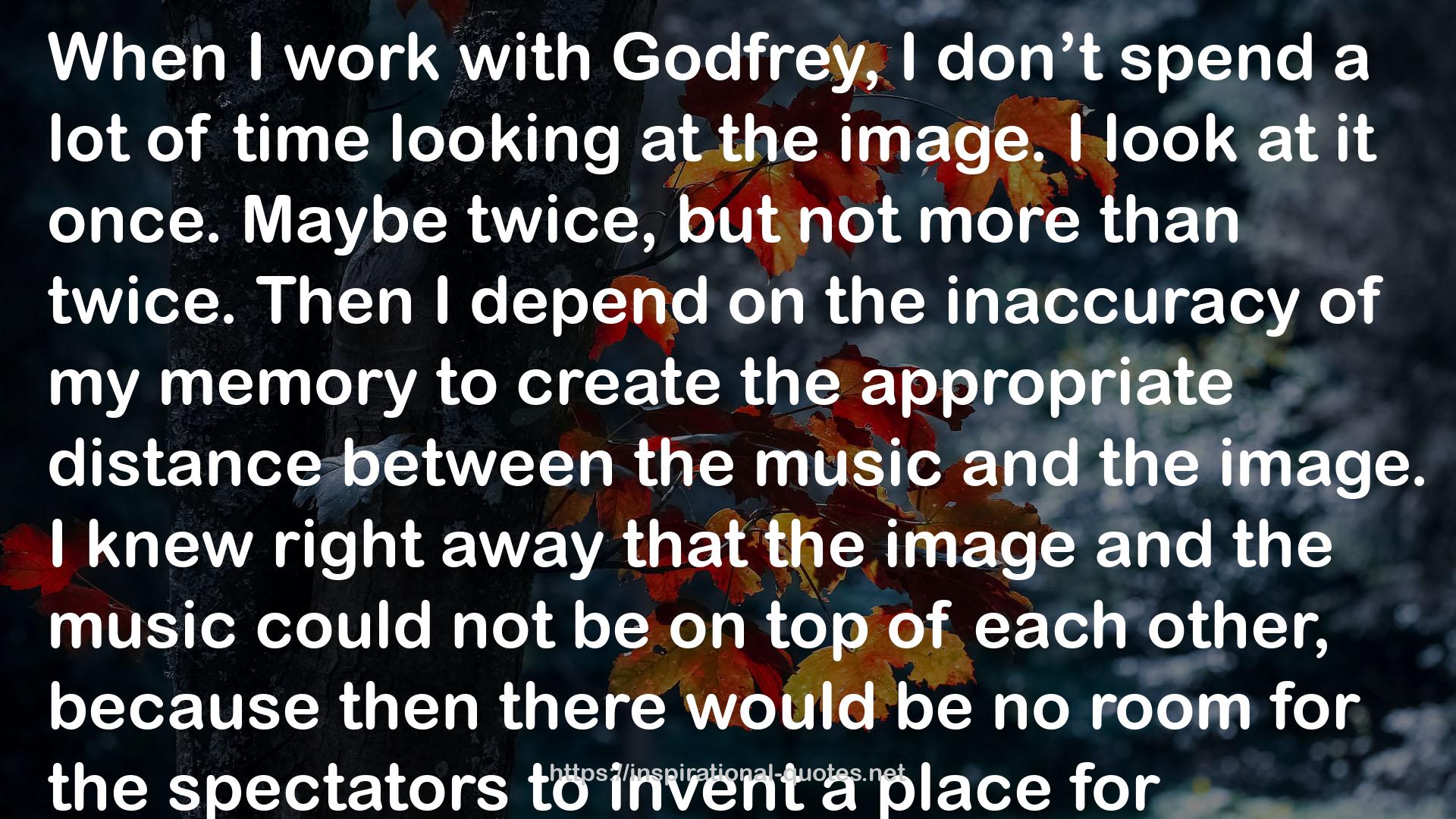" When I work with Godfrey, I don’t spend a lot of time looking at the image. I look at it once. Maybe twice, but not more than twice. Then I depend on the inaccuracy of my memory to create the appropriate distance between the music and the image. I knew right away that the image and the music could not be on top of each other, because then there would be no room for the spectators to invent a place for themselves. Of course, in commercials and propaganda films, the producers don’t want to leave a space: the strategy of propaganda is not to leave a space, not to leave any question. Commercials are propaganda tools in which image and music are locked together in order to make an explicit point, like “Buy these shoes” or “Go to this casino.”
The strategy of art is precisely the opposite. I would describe it this way: When you listen to a piece of music and you look at an image at the same time, you are metaphorically making a journey to that image. It’s a metaphorical distance, but it’s a real one all the same, and it’s in that journey that the spectator forms a relationship to the music and the image. Without that, it’s all made for us and we don’t have to invent anything. In works like Godfrey’s, and in works, for that matter, like Bob Wilson’s, the spectators are supposed to invent something. They are supposed to tell the story of Einstein. In Godfrey’s movies Koyaanisqatsi and Powaqqatsi, the words in the title are the only words there are. The journey that we make from the armchair to the image is the process by which we make the image and the music our own. Without that, we have no personal connection. The idea of a personal interpretation comes about through traversing that distance. "
― Philip Glass
Image for Quotes

